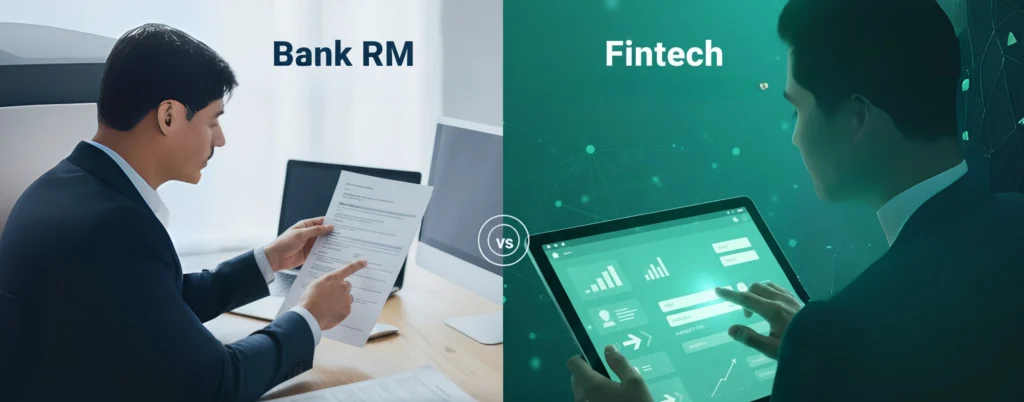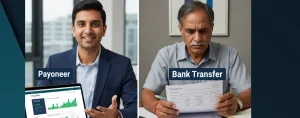Why Compliance Support Matters More Than “Fees vs Rates”
For many Indian businesses receiving money from abroad, the conversation often stops at fees and FX spreads. But seasoned exporters and service providers know: compliance is equally critical.
- Without proper Foreign Inward Remittance Certificate (FIRC), you cannot claim export incentives or prove legitimacy during tax audits.
- Without correctly tagging the RBI purpose code, you risk FEMA violations.
- And without clarity on RBI-compliant inward remittance flows, future scrutiny from regulators or auditors can create unnecessary friction.
The real question: Who helps you stay compliant better — your bank’s Relationship Manager (RM) or a modern fintech platform?
Quick Refresher: The Rules That Govern You
Before comparing, let’s anchor on the regulatory backdrop:
- RBI FEMA framework: All cross-border inflows are governed by Foreign Exchange Management Act (FEMA), implemented via RBI circulars.
- RBI purpose code: Every foreign inward remittance needs to be tagged with a purpose code (e.g., P0104 for software services, P0802 for business travel). It determines reporting classification under RBI FEMA regulations.
- FIRC (Foreign Inward Remittance Certificate): Issued by banks, this document certifies that you received foreign currency in India via an authorized dealer (AD Category-I bank). It’s often needed for GST refunds, export incentives, or compliance checks.
- RBI-compliant inward remittance: Ensures that the funds flow through authorized channels, are tagged correctly, and documented for audit trails.
In short: without correct purpose codes + timely FIRC, your export revenue can be questioned by both tax and regulatory authorities.
Explore our detailed guide on Foreign Inward Remittance Certificate
Option 1: Bank Relationship Manager (RM)
Strengths
- Direct access to compliance desk: An experienced RM knows which purpose code applies for your sector, and can escalate queries to the bank’s compliance team.
- FIRC issuance: Banks are the legal issuers of FIRCs. Having an RM helps cut through red tape for faster issuance.
- Audit readiness: Established banks have standardized formats that most auditors are comfortable with.
Limitations
- Turnaround time: FIRC requests may take days, especially in public sector banks. Even private banks often require follow-up.
- Opaque processes: Purpose code tagging may happen “behind the scenes,” with little visibility unless you ask specifically. Errors are common (e.g., P0102 instead of P0104).
- Overreliance on RM availability: If your RM is unavailable, your query may get stuck in the system.

Option 2: Fintech Platforms
Strengths
- Self-serve compliance dashboards: Many fintech in banking solutions (e.g., Wise Business, Payoneer, RazorpayX) show purpose code tagging during the transaction itself.
- Automated FIRC / e-FIRC access: Instead of writing emails to the bank, you often download an RBI-compliant inward remittance certificate directly from the platform.
- Transparency: You see which purpose code was chosen, fees charged, and status of compliance documents in real time.
- Education: Fintechs often explain FEMA regulations in plain English, reducing dependency on RMs.
Limitations
- Underlying dependency on banks: Ultimately, FIRCs are still issued by authorized dealer banks. Fintechs act as facilitators, so delays may still happen.
- Coverage gaps: Not all purpose codes are available via every fintech partner. Exporters in niche industries (e.g., shipping, media royalties) may still need bank help.
- Regulatory caution: Some exporters worry that fintech platforms might attract closer RBI scrutiny compared to traditional banks, even though they are legally compliant.
Bank RM vs Fintech — Side-by-Side Comparison
| Factor | Bank RM | Fintech Platforms |
| RBI Purpose Code Support | Knowledgeable RMs can advise; but tagging often invisible to client. Errors are corrected only if noticed. | Purpose code usually shown during transaction; easier for client to verify before submitting. |
| FIRC (Foreign Inward Remittance Certificate) | Official issuer; can provide physical or digital copies. May require formal request and multiple follow-ups. | Provide auto-downloadable e-FIRCs or digital FIRC copies, issued via partner banks. Faster, but still dependent on the bank in the backend. |
| FEMA Regulations Compliance | Banks follow RBI FEMA circulars strictly, but communication is often jargon-heavy. | Fintechs simplify communication, offering plain-English guidance on FEMA rules. |
| Speed of Response | Depends heavily on RM availability and bank’s hierarchy. | Often same-day dashboard access to documents; customer support chat/email is faster. |
| Transparency | Low; processes are manual and opaque. | High; users can track compliance in real time. |
| Best Fit | Larger exporters with high-value relationships; industries needing custom compliance. | Freelancers, SMBs, startups that prefer transparency and speed over hierarchy. |
Practical Scenarios
- Freelancer exporting software services
- Likely benefits from fintech: simple purpose codes (P0104), instant e-FIRC, less need for RM interaction.
- Likely benefits from fintech: simple purpose codes (P0104), instant e-FIRC, less need for RM interaction.
- SME exporting goods with DGFT incentives
- Needs official FIRC copies for DGFT and GST refunds. Bank RM ensures correct issuance; fintech can speed up retrieval.
- Needs official FIRC copies for DGFT and GST refunds. Bank RM ensures correct issuance; fintech can speed up retrieval.
- Large exporter with complex transactions
- Still better off with RM, because FEMA regulations may require nuanced interpretation (e.g., advance payments, refunds, project exports).
- Still better off with RM, because FEMA regulations may require nuanced interpretation (e.g., advance payments, refunds, project exports).
FAQs
Q: Is a fintech-issued FIRC valid?
Yes. The FIRC always originates from an RBI-authorized dealer bank. Fintechs only act as digital distributors of the same certificate.
Q: Can I get in trouble under RBI FEMA if my purpose code is wrong?
Yes. Incorrect tagging may misclassify your income (e.g., consultancy tagged as personal transfer). While not criminal by itself, it can delay export benefits and raise audit questions.
Q: Do I need both bank RM and fintech?
Not necessarily. Many SMBs use fintech for speed and transparency, but keep a bank RM as backup for complex cases or regulatory escalations.
Key Takeaways
- Banks = authority, legacy, officialdom. You need them for FIRC issuance and complex FEMA scenarios.
- Fintech = speed, transparency, and user-friendliness. Best for straightforward foreign inward remittance cases.
- For RBI-compliant inward remittance, both routes ultimately rely on authorized dealer banks. The difference is how much hand-holding you get, and how quickly you can access compliance documents.
Final Word: The Compliance Edge Exporters Deserve
Having worked with exporters for decades, one truth is clear: global payments are not just about fees and forex spreads — they are about predictability, compliance, and speed. A wrong purpose code, a delayed FIRC, or a hidden bank spread can erase weeks of profit. Traditional banks bring authority but operate with opacity; international fintechs bring speed but rarely understand the fine print of India’s FEMA framework.
HiWiPay bridges that gap. It is not a generic payments app, but a platform designed from the ground up for India’s export economy and SME trade flows. By combining 24-hour settlements, transparent FX with no hidden margins, and built-in compliance intelligence (auto-FIRCs, purpose code tagging, invoice matching, document guidance), HiWiPay takes away the friction that exporters have simply accepted as “part of the process.”
More importantly, it is led by Dewan Neralla, the industry veteran who has already scaled platforms like Atom Technologies and NTT Data Payments. That pedigree means exporters are not betting on an experiment — they’re relying on expertise proven at scale.
👉 In an environment where every rupee matters, HiWiPay ensures exporters don’t just receive their money faster — they keep more of it, fully compliant with RBI norms, and ready for audit or incentive claims.
For India’s next generation of exporters and B2B businesses, this is the difference between surviving the volatility of cross-border trade and scaling with confidence.



